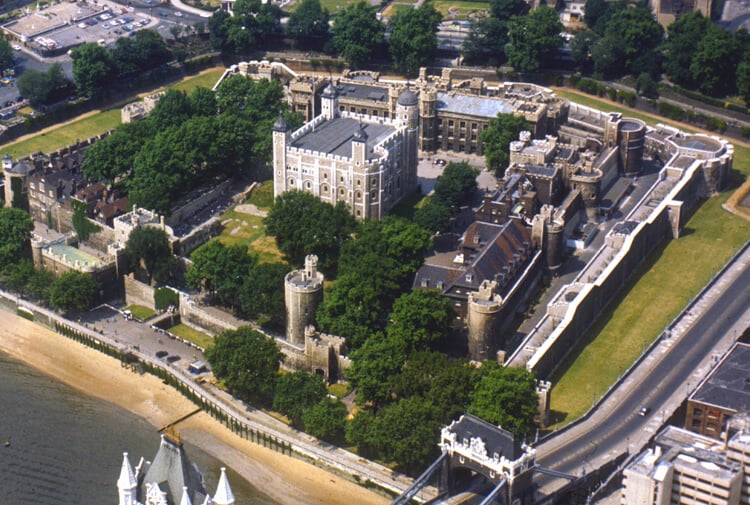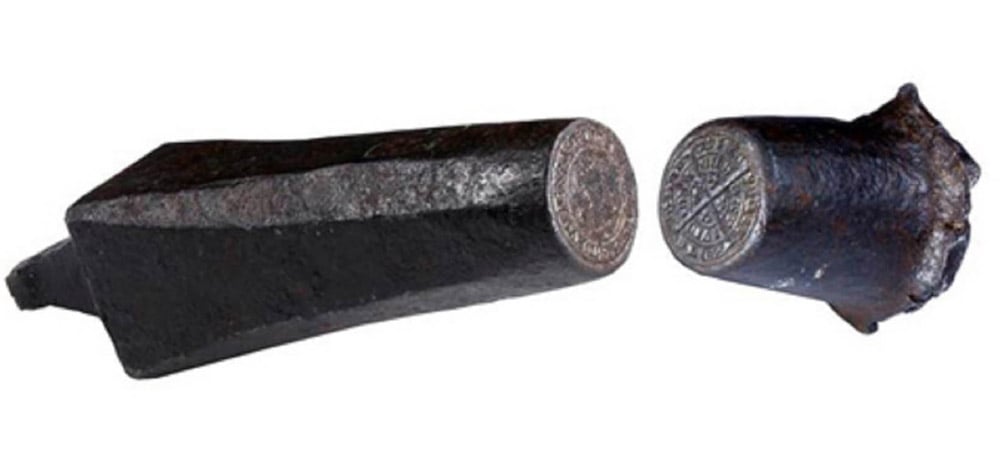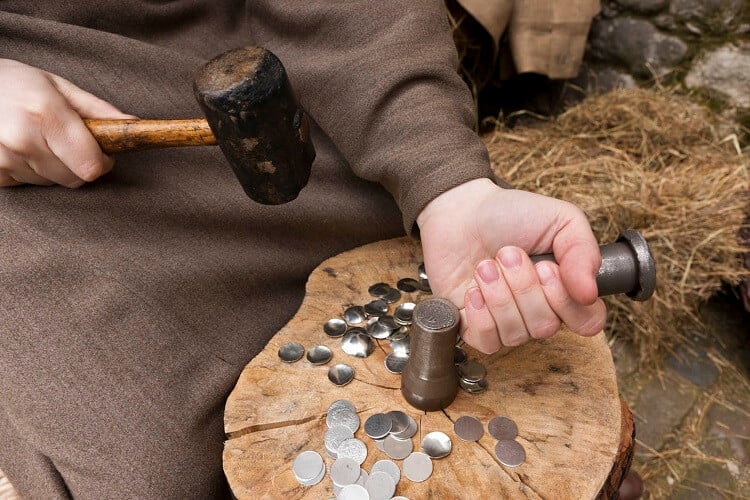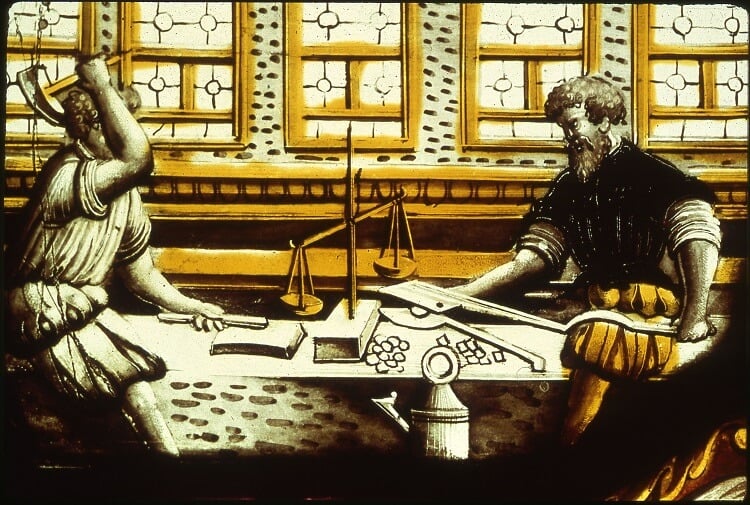Hand striking
The Mint was at the Tower of London from at least 1279 to 1812, over 500 years. Up until the late 17th century the coins produced at the Mint were all made by hand, now we use machines to make our coins.

During the medieval period, the Mint wasn’t like the modern factory that we have today, it would have looked more like blacksmiths workshops and all the coins were all struck by hand.

Tools called dies were engraved with designs, one for the heads side and one for the tails side of the coin. One of these dies had a spike which would be driven into a block of wood to hold it steady.

A blank disc made of silver or gold would then be placed on top and the second die was held over the blank and hit with a hammer. The pressure of the hammer strike would imprint the design into the metal of the coin changing the blank into a coin.

Hammered coins can have very uneven edges as they are cut by hand. They are also very thin to enable the design to be impressed.

Because of the hand making process, and the fact that the blank coins were also cut by hand, coins from this time were not uniform in their appearance and not perfectly round, unlike coins today which are made to look identical.
Watch the video below to see hand striking in action
